A wire PQ of mass 10 g is at on tow parallel horizontal metal rails. The spearation between the rails is 4.9 cm A magnetic field of 0.80 tesla is applied perpendicular to the plane of the rails, directed inwards . The resistance of the circuit is slowly decreased . When the resistance decreases to below 20 ohm, the wire PQ begins to slide on the rails. Calculate the coefficient of friction between the wire and the rails
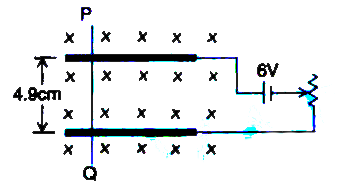
Wire PQ begins to slide When magnetic force is just equal to the force of friction, i.e .,
μmg=ilBsinθ(θ=900)
Here, i=ER=620=0.3A,
μ=ilBmg=(0.3)×(4.9×10−2)(0.8)(10×10−3)(9.8)=0.12
Topper's Solved these Questions
- ELECTROMAGNETICSBOOK - AAKASH SERIESCHAPTER - ELECTROMAGNETICSEXERCISE - EXERCISE (VERY SHORT ANSWER QUESTIONS )
18 Videos
- ELECTROMAGNETICSBOOK - AAKASH SERIESCHAPTER - ELECTROMAGNETICSEXERCISE - PROBLEMS (LEVEL -I)
30 Videos
- ELECTROMAGNETIC WAVESBOOK - AAKASH SERIESCHAPTER - ELECTROMAGNETIC WAVESEXERCISE - EXERCISE -II
20 Videos
- ELECTROSTATICSBOOK - AAKASH SERIESCHAPTER - ELECTROSTATICSEXERCISE - ADDITIONAL PRACTICE EXERCISE (PRACTICE SHEET (ADVANCED) INTEGER TYPE QUESTIONS)
4 Videos
Similar Questions
A wire PQ of mass 10g is at rest on two parallel metal rails.The separation betweem the rails is 4.9 cm.A magnetic field if 0.80 T is applied perpendicular to the plane of the rails, directed downwads. The resisitance of the circuit is slowly decreased. When the resistance to bleow 10 Ω the wire PQ begins to slide on the rails .Calculate the coefficient of friction between the wire and the rails
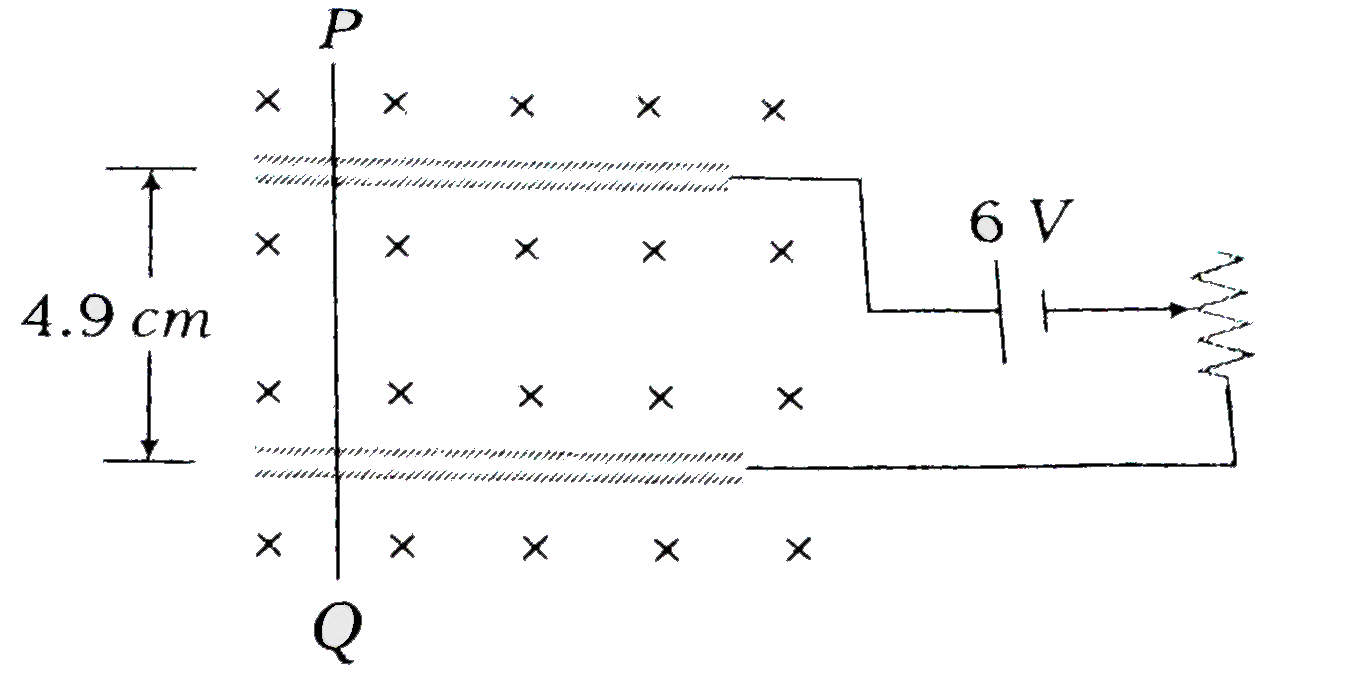
View SolutionA metal wire PQ of mass 10g lies at rest on two horizontal metal rails separated by 5cm as shown in Fig. A vertically downward magnetic field of magnitude 0.80T exist in the space. The resistance of the circuit is slowly decreased and it is found that when the resistance goes below 20.0Ω the wire PQ starts sliding on the rails. The coefficient of friction between wires and rails is found. The coefficient of friction between wires and rails is found to be n/25. find n
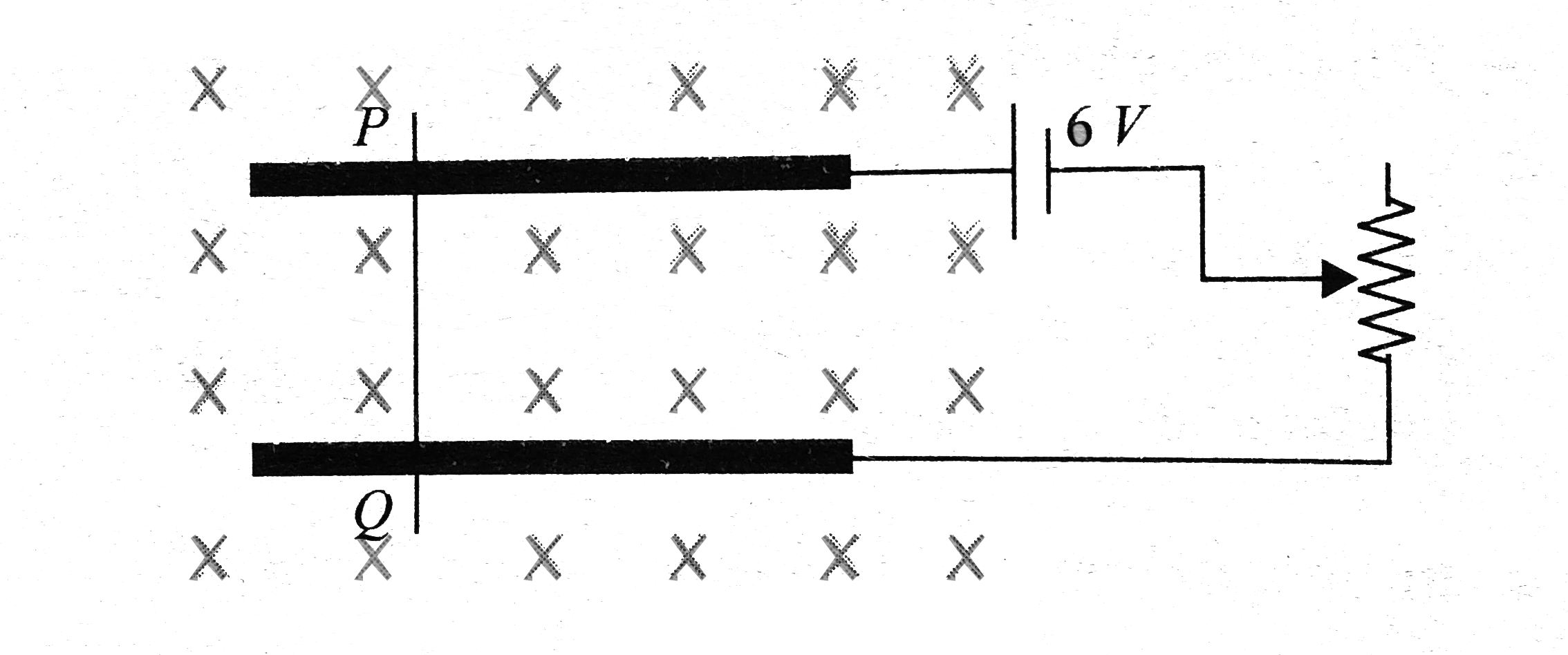
View Solution
Knowledge Check
Figure shows a wire sliding on two parallel, conducting rails placed at a separation L . A magnetic field B exists in a direction perpendicular to the plane of the rails. What force is necessary to keep the wire moving at a constant velocity V ?
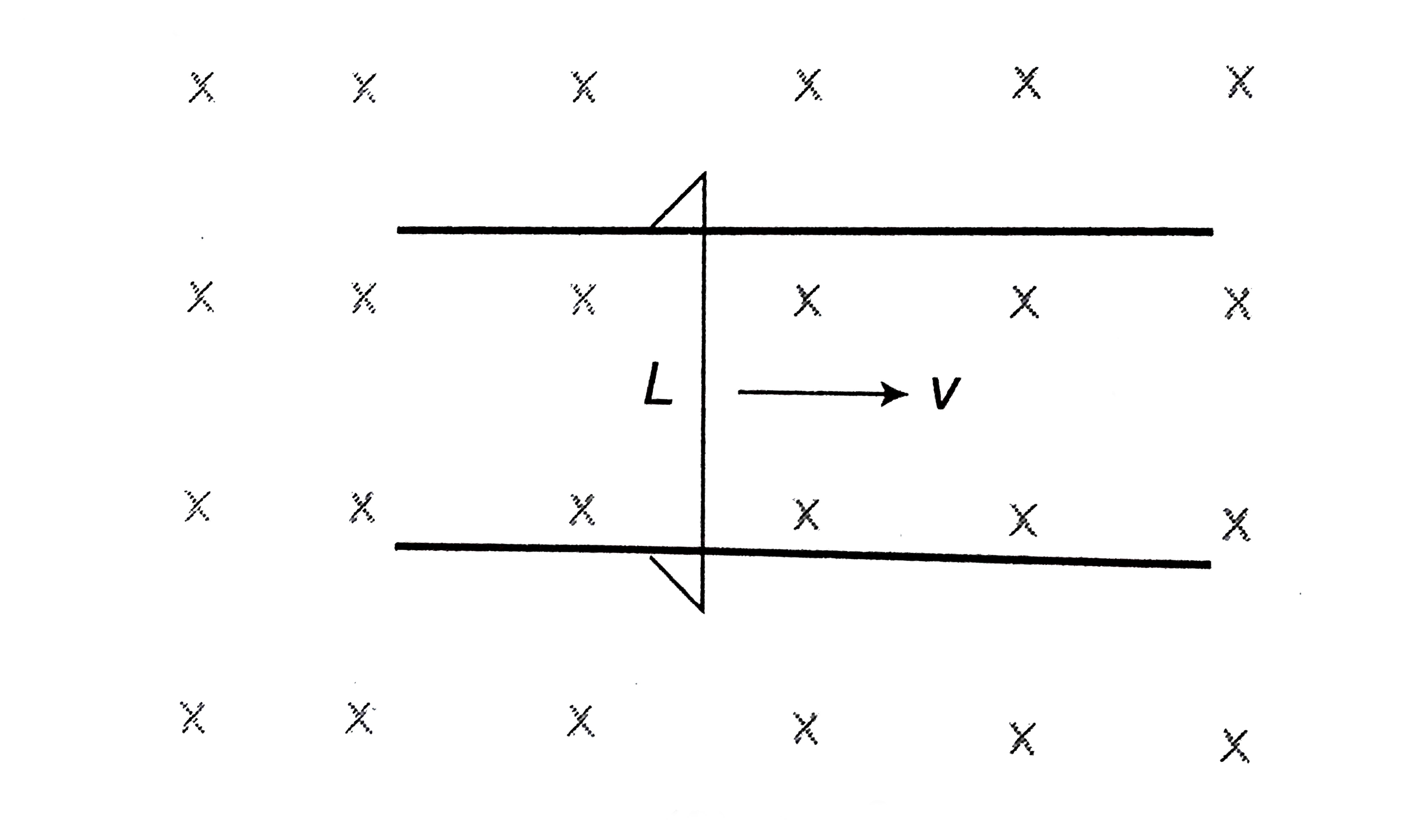 ABvLBBv2LCzeroDB2v2L/R
ABvLBBv2LCzeroDB2v2L/R
A metal wire PQ of mass 10g lies at rest on two horizontal metal rails separated by 5cm as shown in Fig. A vertically downward magnetic field of magnitude 0.80T exist in the space. The resistance of the circuit is slowly decreased and it is found that when the resistance goes below 20.0Ω the wire PQ starts sliding on the rails. The coefficient of friction between wires and rails is found. The coefficient of friction between wires and rails is found to be n/25. find n

View Solution
A metal wire PQ of mass 10gm lies on two horizontal metal rails separated by 4.90cm(figure).A vertically downward magnetic field of magnitude 0.800T exists in the space.The resistance of the circuit is slowly decreased and it is found that when the resistance goes below 20.0Ω the wire PQ starts sliding on the rails.Find the coefficient of friction.Neglect magnetic force acting on wire PQ due to metal rails (g=9.8m/g2)
View SolutionA metal wire PQ of mass 10g lies at rest on two horizontal metal rails separated by 4.90 cm . A vertically downward magnetic field of magnitude 0.800 T exists in the space. The resistance of the circuit is slowly decreased and it is found that when the resistance goes below20.0Ω, the wire PQ starts sliding on the rails. Find the coefficient of friction.
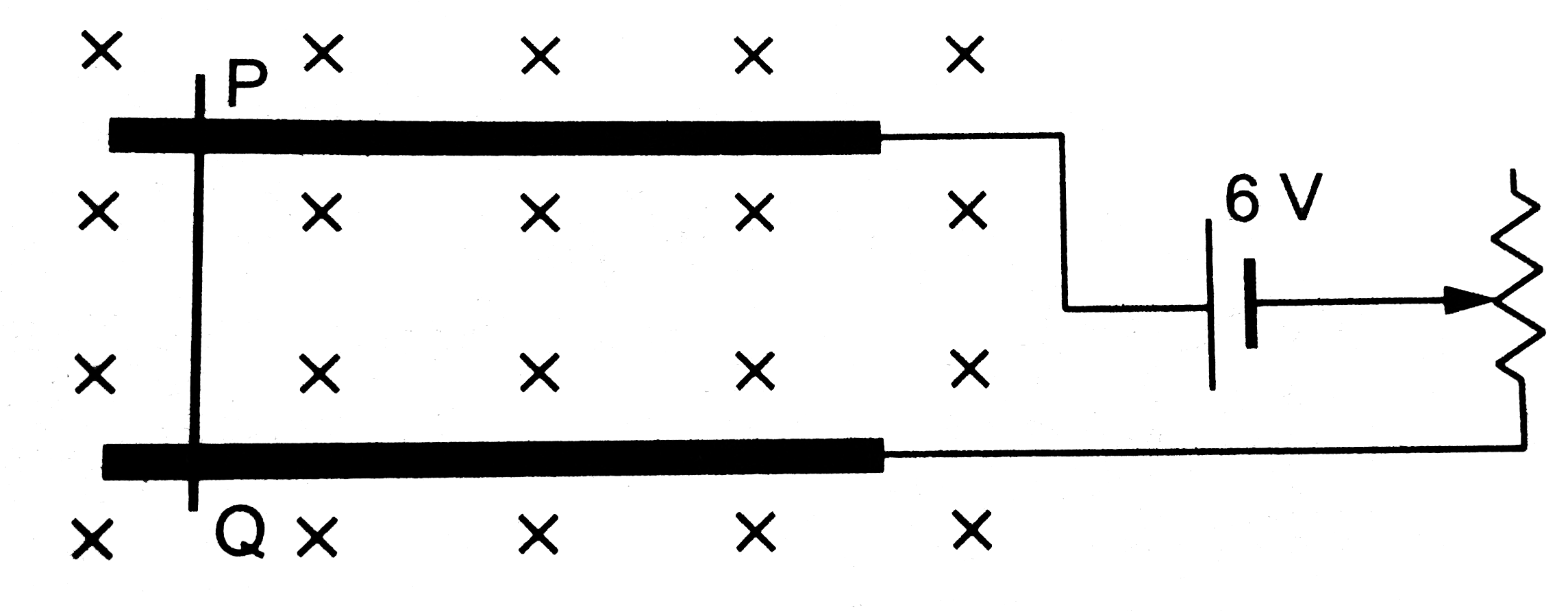
View SolutionA matel wire PQ of mass 10g lies at rest on two horizontal metal rails separated by 4.90 cm . A vertically downward magnetic field of magnitude 0.800 T exists in the space. The resistance of the circuit is slowly decreased and it is found that when the resistance goes below20.0Ω, the wire PQ starts sliding on the rails. Find the coefficient of friction.

View SolutionA matel wire PQ of mass 10g lies at rest on two horizontal metal rails separated by 4.90 cm . A vertically downward magnetic field of magnitude 0.800 T exists in the space. The resistance of the circuit is slowly decreased and it is found that when the resistance goes below20.0Ω, the wire PQ starts sliding on the rails. Find the coefficient of friction.

View SolutionShows a wire sliding on two parallel, conducting rails placed at a separaton l. A magnetic feld B exists in a direction perpendicular to the plane of the rails. What force is necessary to keep the wire moving at a constatn velocity v ?
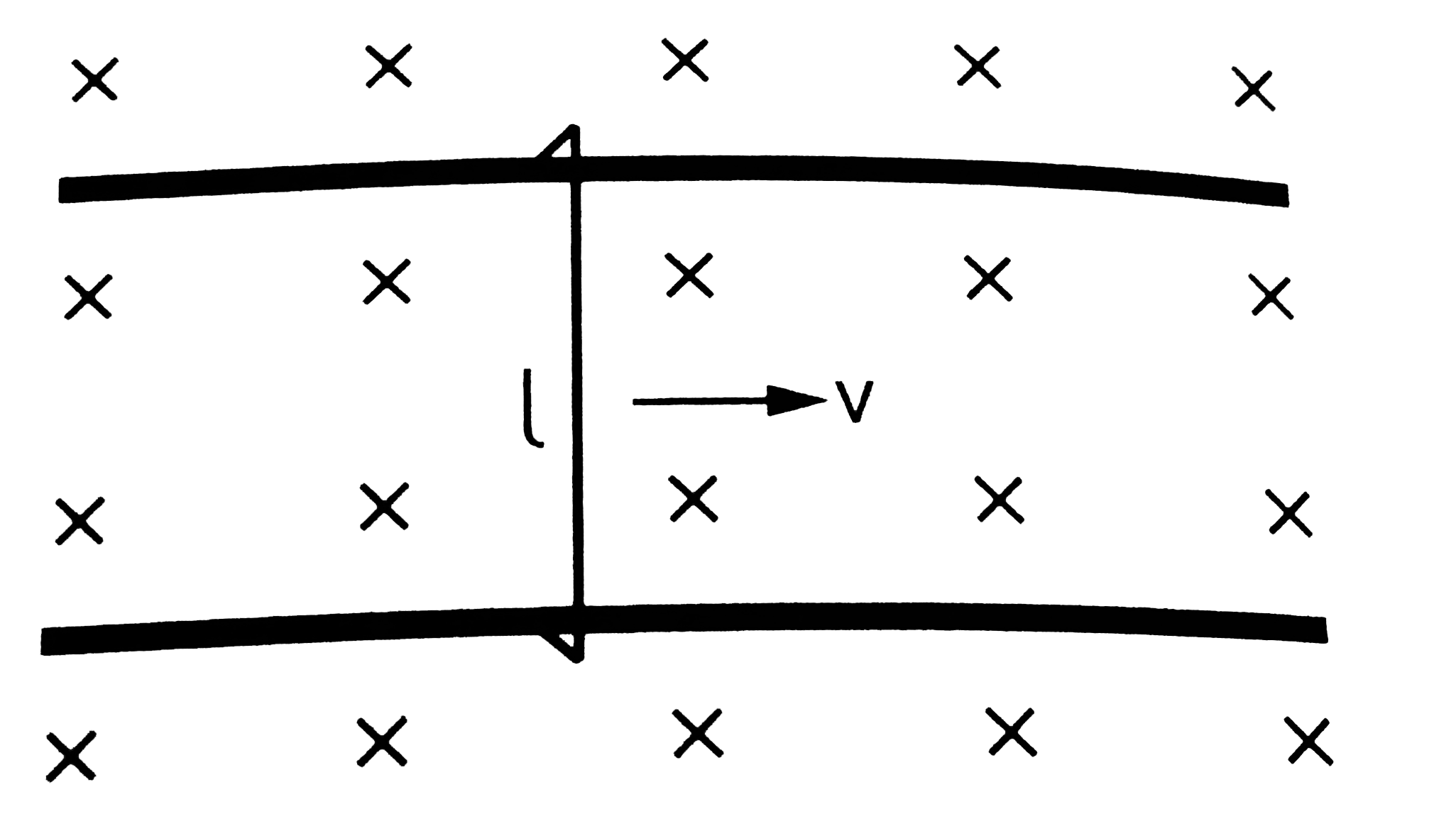
View SolutionFigure shows a wire sliding on two parallel, conducting rails placed at a separation L . A magnetic field B exists in a direction perpendicular to the plane of the rails. What force is necessary to keep the wire moving at a constant velocity V ?

View Solution
